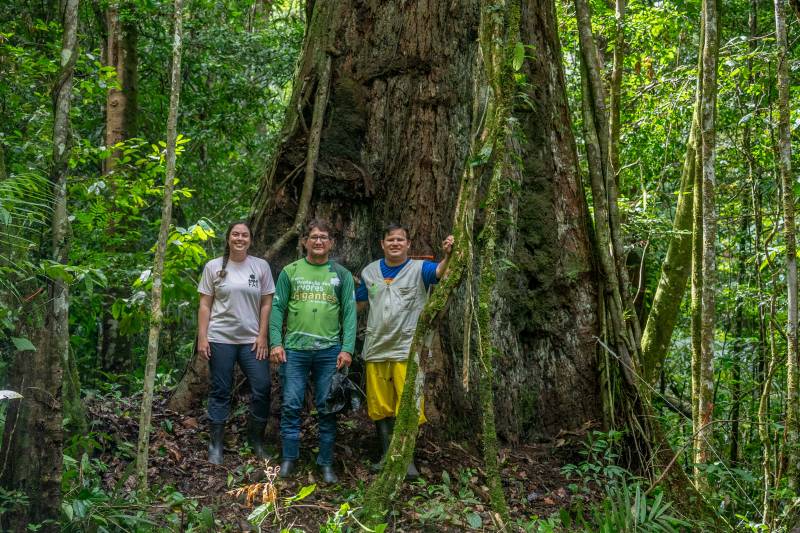A monumental new conservation area has been established in the heart of the Amazon, designed to protect the tallest tree in Latin America while inviting eco-tourism and scientific research. The Giant Trees of the Amazon State Park (Parque Estadual Ambiental das Árvores Gigantes in Portuguese), located in Pará, Brazil, covers 560,000 hectares and is home to an 88.5-meter (290-foot) red angelim tree, which has been recognized as the tallest tree in South America. This towering Dinizia excelsa rivals the height of the Statue of Liberty, making it one of the most extraordinary natural landmarks in the region.
The park, officially created following a state decree, aims to safeguard these giant trees and their surrounding ecosystems, ensuring the preservation of this critical part of the Amazon rainforest. The park’s new designation moves it to “full protection” status, preventing activities like logging and other forms of land exploitation that previously threatened the area.
According to environmental officials, the reclassification of the land provides a shield against illegal deforestation and logging, which have plagued other parts of the Amazon. “This park represents a major step forward in protecting not only the unique biodiversity but also the economic future of local communities,” said Ronaldison de Oliveira Farias, the park’s manager.
In addition to conservation, the park will be open for eco-tourism, offering visitors a chance to witness the majesty of the Amazon’s tallest trees. Visitors will have the opportunity to explore one of the most pristine corners of the Amazon while contributing to the sustainable development of the region. Limited harvesting of Brazil nuts by nearby communities will also continue, allowing a balance between conservation efforts and local livelihoods.
The creation of the Giant Trees of the Amazon State Park highlights Brazil’s commitment to environmental preservation and its potential to leverage tourism as a tool for sustainable development. Authorities hope that the park will attract scientists, conservationists, and tourists eager to explore one of the most biodiverse and untouched areas of the Amazon.
With its official opening, the park not only protects a natural wonder but also invites the world to experience the grandeur of the Amazon rainforest in a way that fosters both environmental preservation and cultural respect.
Source: Agência Pará de Notícias




